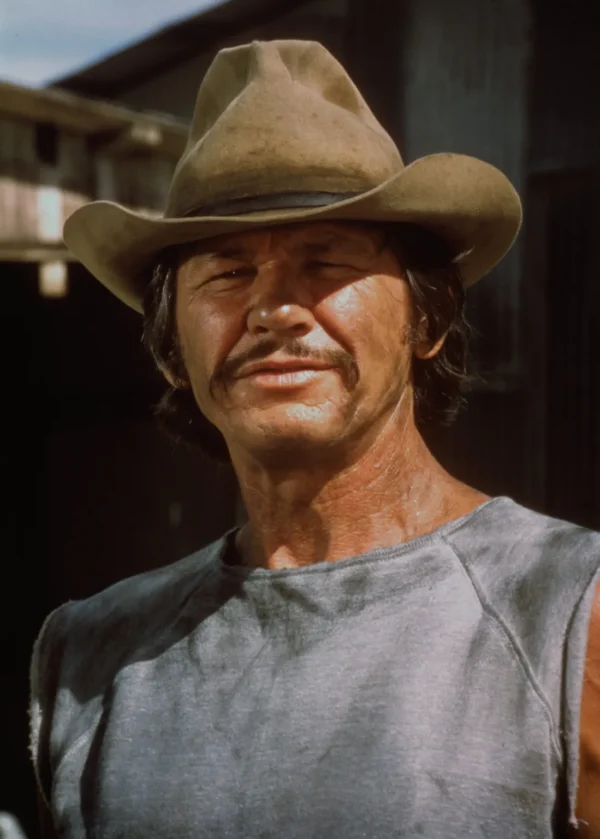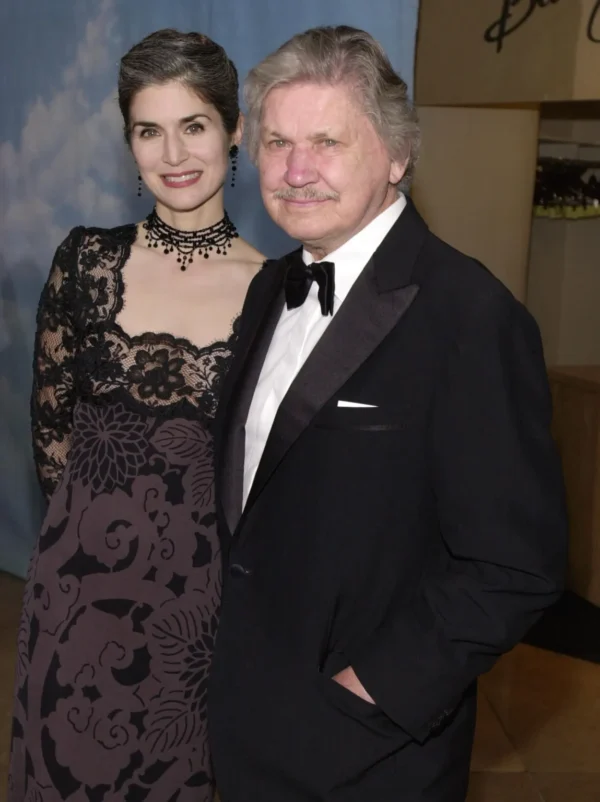From Coal Mines to Stardom: Charles Bronson’s Journey from Self-Doubt to Icon
Hollywood stars are often enveloped in glamour, creating the illusion that every celebrity was destined for fame. But this image doesn’t always align with reality, and Charles Bronson’s life is a testament to that. Born Charles Dennis Buchinsky, Bronson’s journey to stardom was anything but easy. His childhood was marked by hardship, growing up in a struggling coal-mining community in Croyle Township, just 60 miles from Pittsburgh.

As one of 15 children, Bronson was the ninth in line. Raising one child can be a financial burden, but for Bronson’s family, already living in extreme poverty, the struggle was overwhelming. Their home, a cramped company-built cabin near the coal car tracks, was too small for such a large family. So small, in fact, that they had to take turns sleeping.
“There was no love in my house,” Bronson recalled. “The only physical contact I had with my mother was when she took me between her knees to pull the lice out of my hair.” His early years were shaped by hardship and emotional isolation, a stark contrast to the Hollywood glamour he would later come to symbolize.
The town itself was a bleak and desolate place, existing primarily to serve business officials eager to exploit the coal mines and maximize profits. Life was hard, not just for the Bronson family, but for everyone living there.
Natural beauty was scarce, the water was poor in quality, and the prospects for a brighter future were dim. Given these conditions, it’s no wonder Bronson described his childhood as lonely and harsh.
When Bronson was a teenager, things took a turn for the worse after his father passed away. Already accustomed to scraping by for pennies, he was forced to leave school to support his family. The only option available to him was to follow in his father’s footsteps and work as a coal miner.

Even as an adult, Bronson was haunted by the memories of that difficult period in his life. The grueling labor and the overpowering stench of coal seemed etched into his senses, as if he could still feel the black dust filling his lungs while he toiled on his hands and knees.
He often recalled the relentless headaches and the sight of his rough, filthy hands after long days in the mines. “I was born with a shovel in my mouth, not a spoon,” Bronson once said, capturing the harsh reality of his upbringing.
But beyond the physical toll, the psychological scars ran deeper. His time in the coal mines left him with a profound sense of inferiority, a burden he carried with him long after he left that life behind.
“During my years as a miner, I was just a kid, but I was convinced I was the lowest form of man,” Bronson reflected.
In his eyes, it wasn’t just his personal struggle—every miner in his area felt the same way. They believed steelworkers and railroad workers were the ‘elite,’ while they were at the bottom, the lowest class of humanity.
“Very few people know what it’s like to live down there, beneath the surface of the world, in that absolute darkness,” he said, revealing the deep emotional and psychological impact of life underground.

Bronson was overjoyed when he was finally enlisted into the army. It was his chance to escape the bleak environment of his youth, with the promise of regular meals and a uniform on his back. This marked a turning point in his life, setting him on the path to becoming one of Hollywood’s most iconic figures.
After serving in World War II, Bronson returned to the United States, where he began studying art. Soon after, he enrolled at the Pasadena Playhouse in California, taking his first steps toward a career that would ultimately make him a household name.
His skills and talents were almost immediately clear: one teacher noticed them early on and soon referred the young Bronson to director Henry Hathaway. This eventually resulted in him being cast in his very first film: the 1951 You’re in the Navy Now.
While he frequently went unnoticed for his early work, by 1954 his work in Vera Cruz and, four years later, as the lead in Machine-Gun Kelly, had won him praise from reviewers
Early on, Bronson worked as a painter, cook, mason, and onion-picker in addition to his acting gigs. In the 1950s, he also legally changed his name from Buchinsky to Bronson out of concern that his Russian-sounding name wouldn’t be well-received during the time when communism was strongly opposed.
But it wasn’t until 1974 that he got his big break, as Paul Kersey in Death Wish, a vigilante architect whose wife and daughter are attacked. Due to the film’s success, multiple sequels were made throughout the ensuing decades.
Following his performance as the renowned drifter James Coburn in Hard Times, Bronson continued to rise to fame.
It took him some time to get used to being a celebrity, and Bronson is reported to have been tormented by his gloomy upbringing.
He specifically avoided those who were invasive or made him feel threatened, according to co-star Andrew Stevens. On the other side, Bronson was known to be open, endearing, and humorous when he was relaxed and at ease.
With his first wife, Harriet Tendler, whom he was married to from 1949 to 1965, Bronson had two children.

Popular British actress Jill Ireland, who appeared with Bronson in a total of 15 movies, including The Valachi Papers and Love and Bullets, was his second marriage.Ireland unfortunately lost her battle with cancer in 1990, leaving behind two children.
With Kim Weeks, a previous worker of an audiobook company who had assisted in the recording of Ireland’s audiobooks, Bronson married for the third time in December 1998.
Later in life, Bronson was diagnosed with Alzheimer’s. His battle with the illness was described as a “stark contrast to the high-octane vitality of his incredible life.”
The celebrity was occasionally seen staggering and confused about Beverly Hills. Fortunately, actor Weeks’s wife Weeks was there to take care of him.
“The family has known for almost a year that something was wrong because Charles just hasn’t been himself,” his sister, Catherine Pidgeon, said.

Bronson, according to Pidgeon, had started to slur his words and spoke more slowly, but he could still identify his family and was able to spend Christmas 2001 with them.
After contracting pneumonia, Bronson’s health rapidly deteriorated over the course of just a few weeks. At Cedars-Sinai hospital in Los Angeles, he passed away on August 30, 2003, at the age of 81. His wife Kim, three daughters, Suzanne, Katrina Holden-Bronson, and Zuleika, a son, two stepsons, Paul and Valentine McCallum, and two grandchildren all survive him.
What a life-long trip Charles Bronson had to take! Every child should have a secure, joyful childhood filled with lifelong experiences.
I’m so grateful that Bronson was able to leave his troubled background behind and carve out a successful career for himself, one that is still vivid in so many people’s minds today. If you’re a fan of Charles Bronson, please share!



